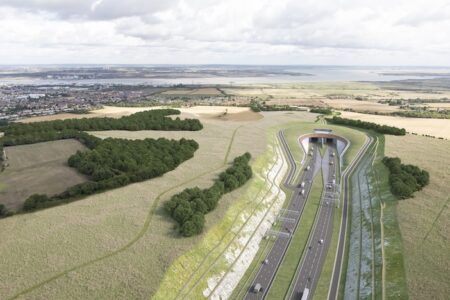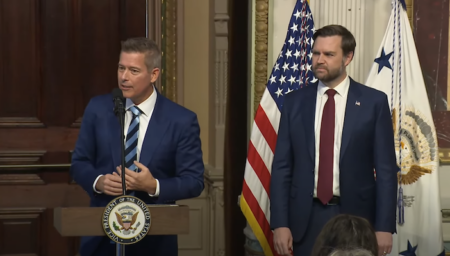The Federal Highway Administration (FHWA) designated three interstate highways in Oklahoma as Alternative Fuel Corridors, a special designation aimed at improving the mobility of passenger and commercial vehicles that run on non-petroleum-based fuels.
The US government’s Fixing America’s Surface Transportation (FAST)Act directed the FHWA to designate national highway corridors for electric vehicle (EV) charging, hydrogen, propane (LPG), and compressed natural gas (CNG) fueling. The Association of Central Oklahoma Governments (ACOG) and the Indian Nations Council of Governments (INCOG) partnered with the Oklahoma Department of Transportation (ODOT) to nominate several highways in the state as alternative fuel corridors. The FHWA has now approved I-35, I-40 and I-44 as ‘signage ready’ natural gas fuel corridors and planned EV charging corridors, meaning Oklahoma is making strides in development of its EV infrastructure. The new designation means special highway signage indicating the nearest alternative fueling station will eventually be placed along these highways by ODOT.
Oklahoma is the only state with all of its interstate system designated as signage ready for CNG, and is now linked to a national network of alternative fuel corridors via highway connections with Texas and Missouri. Oklahoma was uniquely qualified to designate natural gas corridors due to the wide availability of CNG fueling along the state’s interstates and highways, and its central position along major highways that cross the country from coast to coast, and from Mexico to Canada. Oklahoma leads the USA in CNG fueling stations per capita, with at least one natural gas fueling station on every 100 miles (161km) of interstate highway in the state. Most stations can accommodate both passenger and commercial vehicle fueling.
While Oklahoma’s EV charging network is less developed, a diverse group of EV stakeholders, including convenience stores, electric utilities, auto dealerships, and local governments, is working together to identify and construct strategic locations for high-capacity EV chargers that will ensure border-to-border charging within Oklahoma, and connections to neighboring states.
“We are excited about this designation from the Federal Highway Administration as it shows the progress of the state’s commitment to an all the above energy strategy, which includes transportation. Alternative fueled vehicles, such as natural gas and electric vehicles, are a key piece of the Oklahoma First Energy Plan to utilize domestic fuels that are clean, efficient, and affordable products of the state,” noted Oklahoma’s Secretary of Energy and Environment, Michael Teague. “As more Oklahomans make the switch to natural gas or electric vehicles they know that we have the infrastructure to support them.”
ODOT executive director Mike Patterson commented, “Oklahoma’s interstates are now part of a national network of highways with easy access to alternative fueling stations. The federal designation and placement of signs on our highways will improve travel for drivers and commercial fleets using CNG and electric vehicles.”
ACOG executive director John Johnson added, “Increased use of alternative fuels supports local economic development, increased energy security, and improved air quality. This helps our regional efforts in meeting ever-changing demands of our transportation system.”




